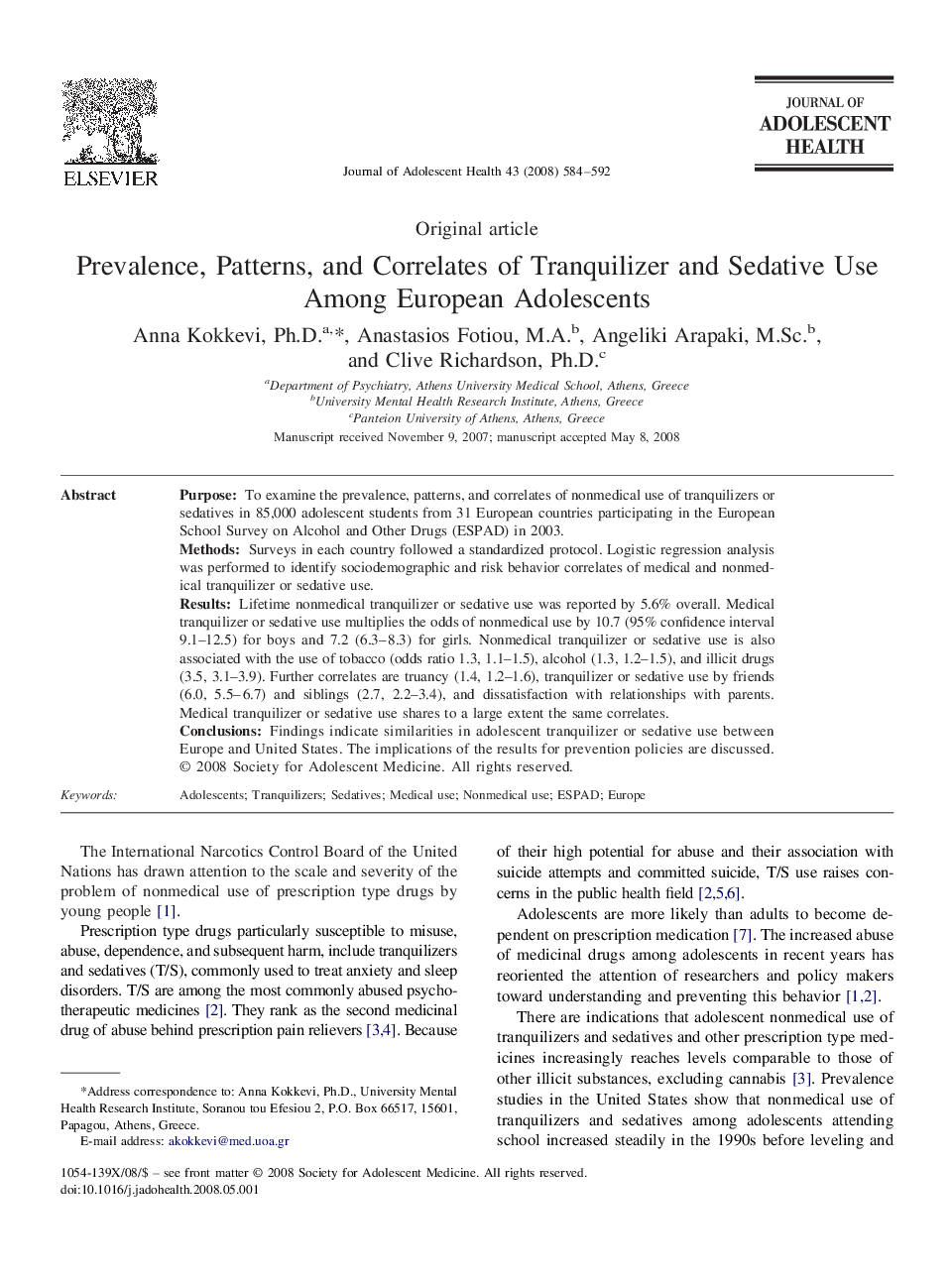| Article ID | Journal | Published Year | Pages | File Type |
|---|---|---|---|---|
| 1080734 | Journal of Adolescent Health | 2008 | 9 Pages |
PurposeTo examine the prevalence, patterns, and correlates of nonmedical use of tranquilizers or sedatives in 85,000 adolescent students from 31 European countries participating in the European School Survey on Alcohol and Other Drugs (ESPAD) in 2003.MethodsSurveys in each country followed a standardized protocol. Logistic regression analysis was performed to identify sociodemographic and risk behavior correlates of medical and nonmedical tranquilizer or sedative use.ResultsLifetime nonmedical tranquilizer or sedative use was reported by 5.6% overall. Medical tranquilizer or sedative use multiplies the odds of nonmedical use by 10.7 (95% confidence interval 9.1–12.5) for boys and 7.2 (6.3–8.3) for girls. Nonmedical tranquilizer or sedative use is also associated with the use of tobacco (odds ratio 1.3, 1.1–1.5), alcohol (1.3, 1.2–1.5), and illicit drugs (3.5, 3.1–3.9). Further correlates are truancy (1.4, 1.2–1.6), tranquilizer or sedative use by friends (6.0, 5.5–6.7) and siblings (2.7, 2.2–3.4), and dissatisfaction with relationships with parents. Medical tranquilizer or sedative use shares to a large extent the same correlates.ConclusionsFindings indicate similarities in adolescent tranquilizer or sedative use between Europe and United States. The implications of the results for prevention policies are discussed.
